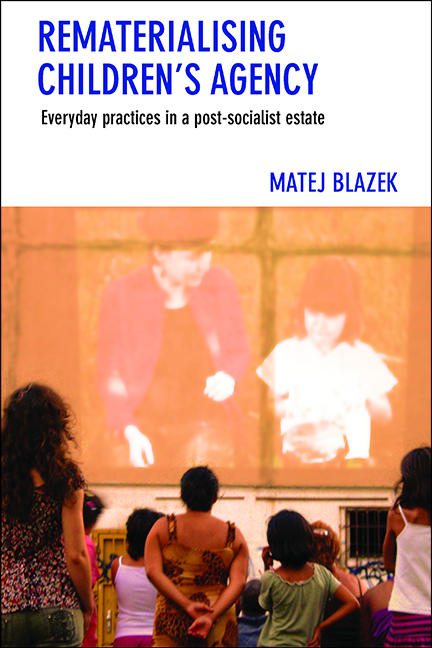five - Public spaces of Kopčany
Published online by Cambridge University Press: 01 September 2022
Summary
We left the lodging house and a few children were already awaiting us near the entrance to the building. A girl halted one of the colleagues and screamed at her for something while the other colleague took me down the stairs and introduced me to other children. I ended up with a group of young boys who were playing near a puddle at the verge of a humpy parking place, probably a result of a clogged sewer.
We brought skipping ropes for the children and we played with them while I started my first conversations in the neighbourhood, although the game attracted the boys more than my words. After a while, one of the colleagues came and suggested that we would have a walk while our other colleague would stay with the boys. We walked anti-clockwise around the workers’ hostel but no children were around. The colleague told me that most of the children we had just met were from the lodging house and that it was a place where especially younger children could be often seen gathering. She also said that it was a usual practice to walk around the hostel if the Centre workers wished to talk to someone (as we just did), as most of children would be concentrated in just a few areas and for most of the path [Figure 5.2] no one would approach us. Indeed, we passed another building but only a young girl waved from the window. It was not until the next building that we met some other children. As the colleague told me, walking around the area of the hostel had also the advantage of getting a look at the whole neighbourhood and seeing who is outside. It took only a few minutes, but if children were on the street and unless they wished to be unseen, we would meet them as the path provided a view of almost all areas of the neighbourhood. (Extract from fieldnotes on my first street work shift, September 2008)
Some of my very first impressions from the contact with children in Kopčany indicated that a range of micro-geographies existed that had an impact on children’s practices. To meet the young boys in front of the lodging house was not accidental. They were close to home as most of them lived in the building.
- Type
- Chapter
- Information
- Rematerialising Children's AgencyEveryday Practices in a Post-Socialist Estate, pp. 67 - 94Publisher: Bristol University PressPrint publication year: 2015



